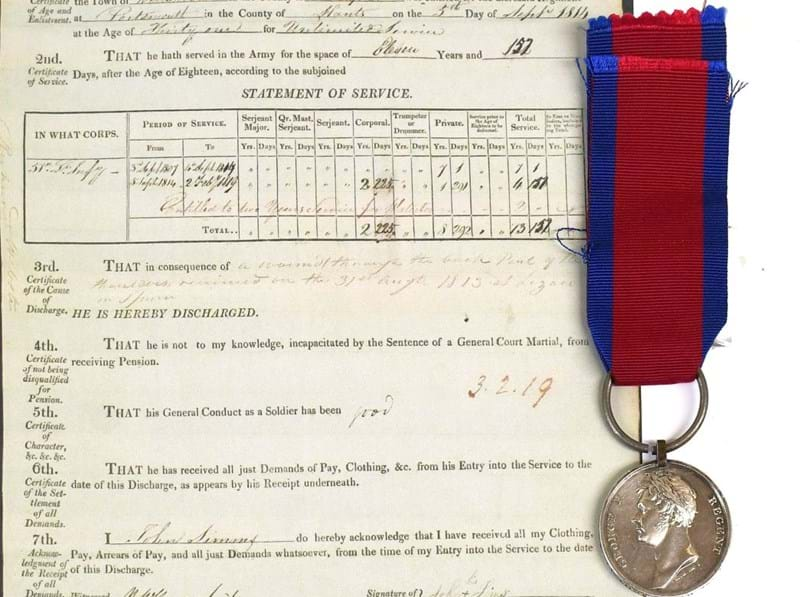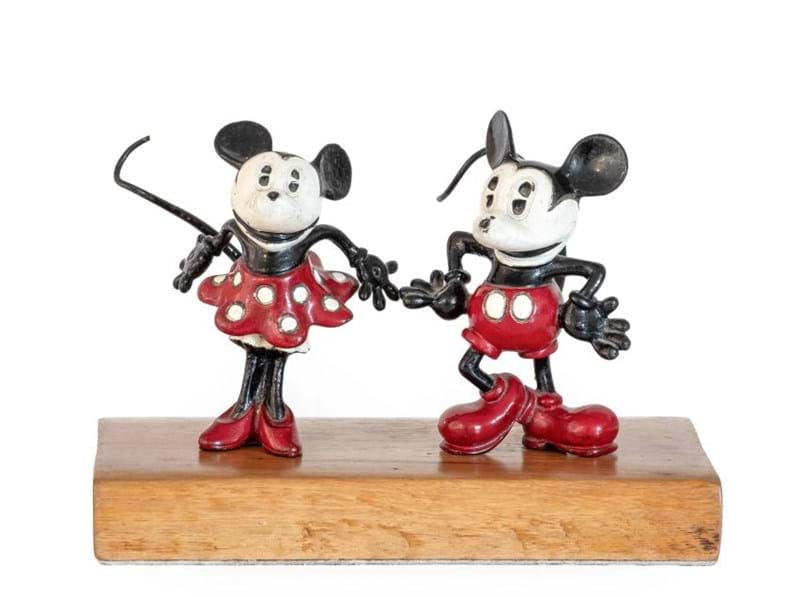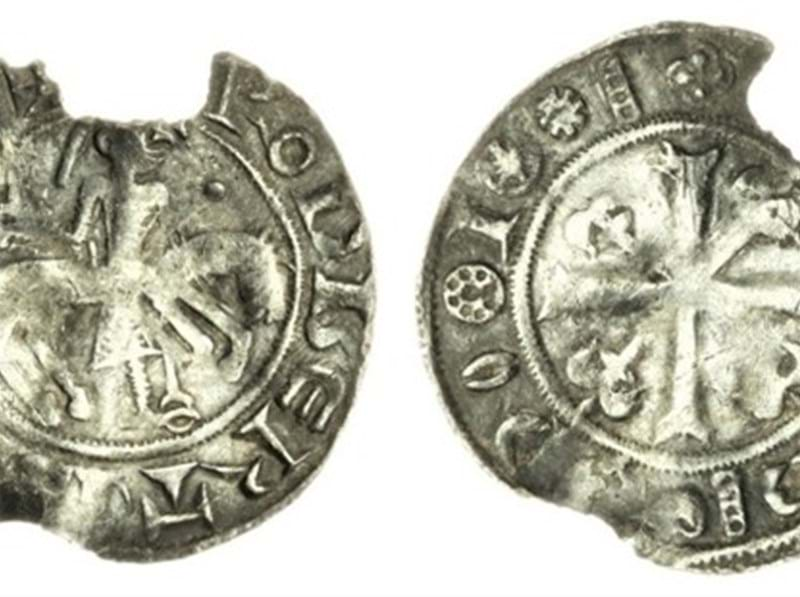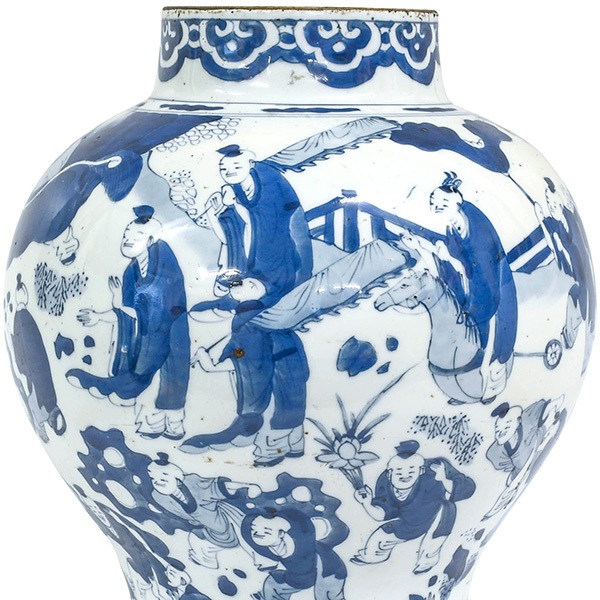Henry Moore OM, CH, FBA (1898-1986)
"Maquette for Warrior with Shield" (1952-53) (cast 1953)
From an edition of 11+1, patinated bronze on a marble base, 21cm high (including base)
Provenance: Purchased from the Leicester Galleries, London, April 1954 by Professor Douglas Grant for £120
Thence by descent
This piece is listed with the Henry Moore Foundation
Literature: A. Bowness, “Henry Moore Complete Sculpture Volume II 1949-1954”, London, 1986, no. 357
Estimate: £35,000-45,000 plus buyer’s premium
To be sold in the Modern & Contemporary Art Sale on 15th October 2022
In “Warrior with Shield” Henry Moore brought together three threads of inspiration, Primitive Art, Classical Art, and the natural world, and transformed them through abstraction into a great Modernist work of art. Drawing on his experiences during two world wars, Moore created a powerful symbol of the human price of conflict.
Henry Moore is perhaps the most celebrated sculptor of the 20th century, and his monumental semi-abstract sculptures had a profound effect on the course of British Art. Achieving global recognition in his lifetime, Moore’s distinctive brand of modernism caused a British sculptural Renaissance.
Moore was born in Castleford, a small mining town in West Yorkshire, in 1898. After initially training as a teacher, he served in the Army during the First World War. However, after being injured he was awarded a rehabilitation grant that afforded him the opportunity to study at Leeds School of Art before going on to the Royal College of Art in London.
Whilst studying in London Moore became absorbed with so called ‘Primitive Art’ in the British Museum. Shying away from the Classical ideal, which was all-pervasive in Western Art, he instead drew inspiration from the imagery of the ancient world, and from African and Oceanic cultures which idolised the female/maternal figure.
Moore began sculpting simple, powerful forms redolent of ancient objects, with a distinct focus on female figures and family groups. Close study of the natural world led Moore to create his abstracted figures, at once both alien and familiar, using organic shapes taken from a line of hills, a massive rock formation, or a sea-smoothed pebble on a beach. The abstraction of organic forms developed in parallel in the work of Barbara Hepworth, whom Moore had known since their days at Leeds School of Art.
“Warrior with Shield” was created at a pivotal point in Moore’s career. Having come under the influence of Picasso and Braque in the 1930s, his work had taken on a darker edge with a greater degree of abstraction and more distorted forms. This was exacerbated by the outbreak of the Second World War, during which Moore became an official war artist and moved away from his characteristic female and maternal images as his primary focus. Moore created a powerful series of drawings of huddled figures in underground shelters, before returning to his hometown of Castleford to visit the colliery in which his father had worked to depict miners toiling at the coal face. These works were filled with a pathos and pain, which he later expressed in “Warrior with Shield” and in austere pieces such as his Helmet series.
Then in 1951 Moore travelled to Greece for his first exhibition in the country, which was held at the Zappeion Gallery in Athens. Experiencing Classical sculpture in the land of its creation affected him deeply, and he later recounted:
“My first visit to Greece came late in life – it was 1951, when I was fifty-three – and I thought before going that I knew about Greek art, because I’d been brought up on it, and that I might even be disappointed. But not at all, of course. I’d say that four or five of my top ten or twelve visual experiences came in Greece. For example, Mycenae had a tremendous impact. I felt that I understood Greek tragedy and – well, the whole idea of Greece – much, much more completely than ever before” (quoted in Alan Wilkinson (ed.), Henry Moore: Writings and Conversations, Berkeley, 2002).
He put aside his earlier prejudices and began to draw Classical elements into his work, such as draped figures and the wounded warrior. “Warrior with Shield” clearly resonates with the Classical past, and it was the first single male sculptural figure Moore had created since his student days. He later noted that creating this work “was almost like the discovery of a new subject matter; the bony, edgy, tense forms were a great excitement to me” (quoted in J. Russell, Henry Moore, London, 1968).
Throughout his career Moore closely studied and sketched rocks, pebbles, and bones to understand the underlying principles, forms, and rhythms of the natural world. He later recounted that:
“The idea for The Warrior came to me at the end of 1952 or very early 1953. It was evolved from a pebble I found on the seashore in the summer of 1952, and which reminded me of the stump of a leg, amputated at the hip…
First I added the body, leg and one arm and it became a wounded warrior, but at first the figure was reclining. A day or two later I added a shield and altered its position and arrangement into a seated figure and so it changed from an inactive pose into a figure which, though wounded, is still defiant…
The head has a blunted and bull-like power but also a sort of dumb, animal acceptance and forbearance of pain… The figure may be emotionally connected…with one’s feelings and thoughts about England during the crucial and early part of the last war” (quoted in Alan Wilkinson (ed.), Henry Moore: Writings and Conversations, Berkeley, 2002).
Combining pain and strength, for Moore his sculpture symbolised how the nation felt in the aftermath of the Second World War, and “Warrior with Shield” clearly resonated with Professor Douglas Grant, who purchased the present maquette in 1954 at an exhibition in the Leicester Galleries, London. Grant had served in 41 Royal Marine Commando during the Second World War.
A full-size version of “Warrior with Shield” was cast in 1972, which can now be found in the Basilica of Santa Croce in Florence. Moore had felt a strong connection with the city since he first visited in 1925, and felt it was his artistic home. In 1972 the city held a major retrospective of his work and the mayor at the time, Luciano Bausi, was particularly taken with “Warrior with Shield”, expressing a desire for the city to keep an example. In 1987 Moore’s widow Irene, knowing her husband’s passion for the city, donated the 1972 version of “Warrior with Shield” to the British Institute.
View Sale Details











